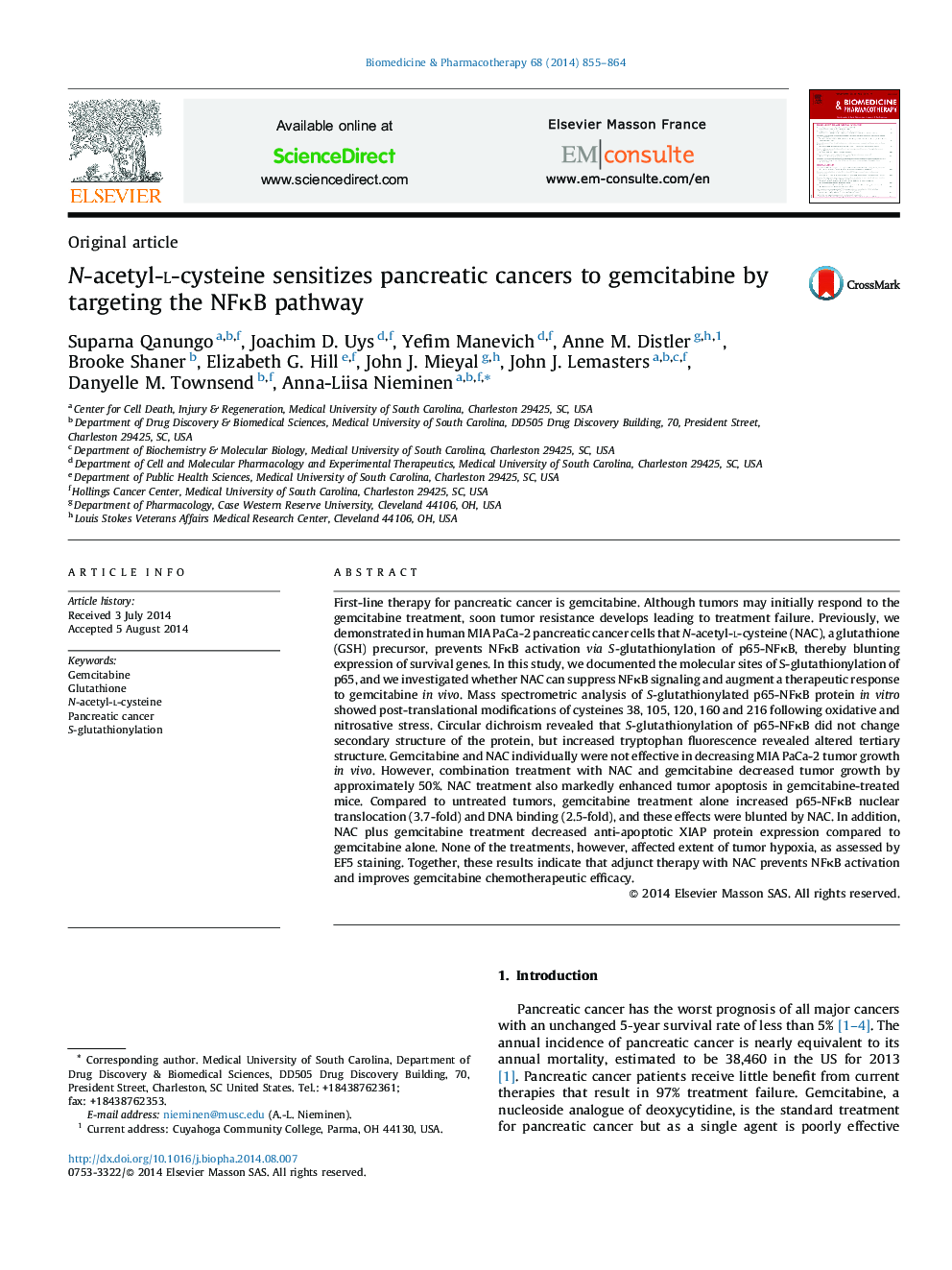| Article ID | Journal | Published Year | Pages | File Type |
|---|---|---|---|---|
| 2524201 | Biomedicine & Pharmacotherapy | 2014 | 10 Pages |
First-line therapy for pancreatic cancer is gemcitabine. Although tumors may initially respond to the gemcitabine treatment, soon tumor resistance develops leading to treatment failure. Previously, we demonstrated in human MIA PaCa-2 pancreatic cancer cells that N-acetyl-l-cysteine (NAC), a glutathione (GSH) precursor, prevents NFκB activation via S-glutathionylation of p65-NFκB, thereby blunting expression of survival genes. In this study, we documented the molecular sites of S-glutathionylation of p65, and we investigated whether NAC can suppress NFκB signaling and augment a therapeutic response to gemcitabine in vivo. Mass spectrometric analysis of S-glutathionylated p65-NFκB protein in vitro showed post-translational modifications of cysteines 38, 105, 120, 160 and 216 following oxidative and nitrosative stress. Circular dichroism revealed that S-glutathionylation of p65-NFκB did not change secondary structure of the protein, but increased tryptophan fluorescence revealed altered tertiary structure. Gemcitabine and NAC individually were not effective in decreasing MIA PaCa-2 tumor growth in vivo. However, combination treatment with NAC and gemcitabine decreased tumor growth by approximately 50%. NAC treatment also markedly enhanced tumor apoptosis in gemcitabine-treated mice. Compared to untreated tumors, gemcitabine treatment alone increased p65-NFκB nuclear translocation (3.7-fold) and DNA binding (2.5-fold), and these effects were blunted by NAC. In addition, NAC plus gemcitabine treatment decreased anti-apoptotic XIAP protein expression compared to gemcitabine alone. None of the treatments, however, affected extent of tumor hypoxia, as assessed by EF5 staining. Together, these results indicate that adjunct therapy with NAC prevents NFκB activation and improves gemcitabine chemotherapeutic efficacy.
